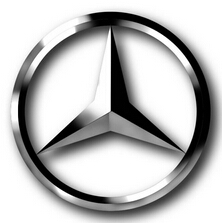Diagnosis and Maintenance of Engine Burning Oil Faults
Posted: 2014-07-09 20:51:13 Hits: 2070
1. Maintenance Thinking Ways of Engine Burning Oil:
We made analysis according to the owner’s presentation of engine burning oil and found that there were only two reasons for this phenomenon:
First, aging valve oil seal and worn valve stem made valve guide wear.
Second, worn cylinder liner and piston ring caused piston ring’s clearance.
2. Maintenance Process of Engine Burning Oil:
After decomposing the diesel and through detailed checking, we found traces of the cylinder on the cylinder liner, which leads to large piston ring’s abrasion and makes piston ring’ s mouth clearance too large. Valve stem has a very thick carbon deposit. We found thick carbon deposition and sludge adhering to the tube inside the manifold when cleaning the manifold.
According to a variety of phenomena, it can be concluded that overhigh water temperature in engine makes the cylinder liner of diesel deform deform and increases the friction between piston ring and cylinder liner at some point. That accelerates the wear of piston, which makes piston ring’s mouth clearance too large. At the same time it also makes cylinder liner be strained and scratched by moving piston ring because of friction and too high temperature.
The piston moves up and down when diesel is at working. The mixture air of high temperature and high pressure in the cylinder piston enters into crankcase from piston ring’s month clearance, making the diesel oil in the crankcase heat up. Under the effect of high temperature, diesel oil steam produces and which will be sucked into intake manifold through positive-crankcase ventilation system. Because the temperature in the intake manifold is lower than inside the crankcase, the oil vapour condenses into oil bead and adheres to the inner intake manifold after meeting colder air. When intake valve opens at the time of admission and the piston moves downward, oil bean adhered to the manifold will be sucked into cylinder and burn. Then, carbon deposition sludge will be made in the intake manifold, which causes the engine burning oil fault.
When checking the cooling system, we found the engine cooling circulation channel was worn by rust and the coolant missed, which caused bad engine cooling effect. This is why high temperature and deformation of the cylinder occurred. It was inevitable that thick carbon deposition covered in the valve stem due to valve rod, valve guide wearing and valve seal hardening.
No valve guide and valve rod wearing was found when checking the fitting clearance of valve stem and valve guide. That means it must be valve seal hardening that leaded to leaking. The valve was moving up and down when opening and closing. Engine oil may flow into the engine from the valve interior as the valve rod and burn in engine room. Because the valve is in high temperature and the oil is sticking on the valve stem, carbon deposition appeared.
When assembling the engine, large repair kits, standard piston ring and cylinder sleeve must be replaced for repairing. Assemble the engine as per the requirement of engine assembly, and then conduct car tests. If the engine is totally normal, fault is removed.
After the engine overhaul, I have learnt that it’s not easy to do one thing. Courgage is necessary, but carefulness and patience is more important. Just like the simple oil seal installation, we should check it carefully and find whether it is deforming or out of circularity, or it will be easy to cause serious consequences.



